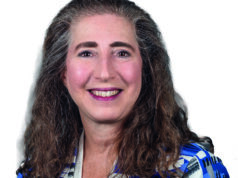
Since conducting an initial U.S. population-based study of gendered abdominal aortic aneurysm (AAA) trends spanning 40 years, Indrani Sen, MBBS, an assistant professor of surgery in the Mayo Clinic Health System, has used her research as a launchpad to delve into the specific differences women experience seeking diagnosis and treatment. The details of the study were presented at the 2023 Women’s Vascular Summit (April 28–29) in Buffalo, New York.
Breaking new ground, Sen’s previous research—led by Manju Kalra, MBBS, a professor of vascular surgery from the Division of Vascular and Endovascular Surgery at the Mayo Clinic in Rochester, Minnesota—used the Rochester Epidemiology Project to collect population-based data, finding that aneurysms are diagnosed and treated in women almost a decade later than in men.
“In the study, we essentially found that women whose aneurysms were not repaired had the highest aneurysm-related mortality—rupture was significantly higher in these women,” Sen reflected in conversation with Vascular Specialist ahead of her Women’s Vascular Summit presentation. “We also found that aneurysms are diagnosed at a smaller size in women, but eventual rupture rates did not differ. This led us to question if aneurysms in women should be repaired at a smaller size.”
Driving Sen to investigate further, her new research scrutinizes the clinical causes behind why women experience a delay to diagnosis and treatment, and to identify the root cause of this. “Reports have said that women lose the ability to have their aneurysms repaired due to aging and developing advanced arterial disease or other comorbidities that take prominence,” Sen elaborated. “This then means they are no longer eligible for aneurysm repair. As the population ages, this is a trend across the board, with patient diagnosis coming much later. But as this study demonstrated, this is specifically in women.”
Importantly, their recent research raises various questions surrounding AAA screening for women, which has historically been viewed as cost-ineffective due to the greater incidence of disease among men. Sen emphasized this fact too, making clear that AAA is still a “disease in men,” with complex aneurysms being more frequently seen in women, said Sen. Yet, she noted the diagnostic landscape for women is “certainly changing.”
Addressing issues with incidental aneurysm detection, which is most commonly how women are diagnosed with AAA, Sen’s research recognizes the cross-section of challenges which make diagnosis and treatment difficult in women—one of which is the presence of comorbidities that make women “reluctant” to undergo treatment, she stated. “It is often not the surgeon saying we can’t do it, but the patient.”
Outlining initial steps that could be taken to overcome this challenge, Sen asserts that greater awareness of screening and extended guidelines that include women who have a history of smoking and a family history of aneurysm are needed.
Having presented the first iteration of this research at a previous conference, Sen—when asked about its reception—stated their information seemed new to the audience, which was supported by a subsequent poll. The majority of participants—both vascular and otherwise—voted that women do not refuse aortic aneurysm repair, which makes visible the gaps in contemporary awareness where her team’s current research fills, she added.











